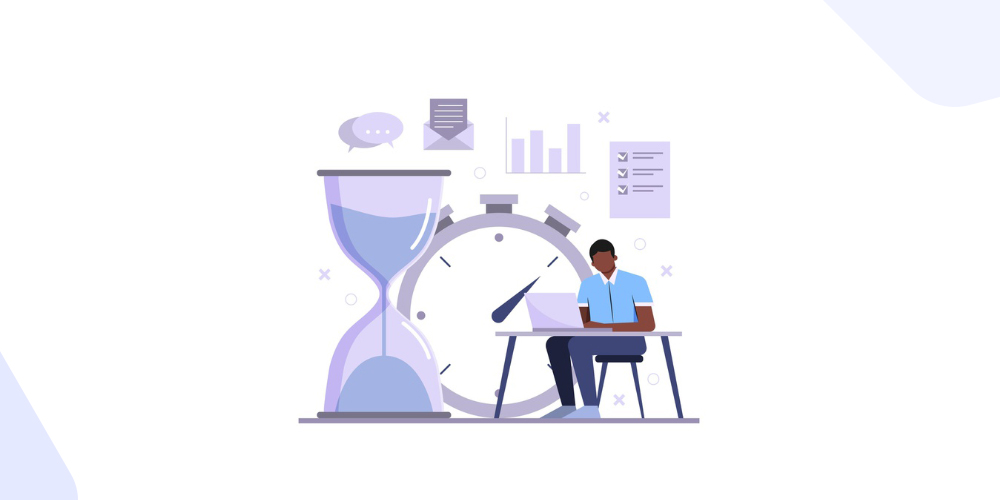
Introduction
With the soaring expenses on education, both students and parents are left with no other alternative but to take an education loan to fund their studies. But students who are aspiring to pursue quality education in top-notch universities, then the cost of education may rise even further. Because of such reasons, students and their families often turn to a bank for financial assistance. As the loan has to be repaid by the students, banks generally offer a grace period to the student during which they do not have to repay the lender. This period is known as the moratorium period in education loans. This article will cover all the aspects of the moratorium period in education loans and the benefits of the moratorium period.
What is the moratorium period in education loan?
A moratorium period in education loan is defined as the time where the borrower is not required to repay the loan. Usually, the repayment for a loan starts soon after a borrower takes it, but in the student loan moratorium period, lenders allow students to start their repayment once they finish their course and start earning. The moratorium period is usually the course duration plus 6 months or 1 year where the lender allows a student to take adequate time to sort out their finances and prepare for loan repayment accordingly.
Banks generally charge interest for the moratorium period, which is later added to the principal. As the interest on the loan generally accrues over the moratorium period, a lender usually calculates interest on the loan on a simple interest basis. So, students who are willing to start their monthly EMIs (equated monthly installment) can start paying during the moratorium period as this would ultimately help them relieve the interest burden.
How does the repayment work?
In the moratorium period, students are not required to pay EMIs but the interest still accrues and adds to the burden. Therefore the earlier the student starts their repayment, the lower will be the total interest paid on the loan. As every borrower has a different view on repayment of the loans, banks have provided different options for the borrower to repay the loan. These options are as follows:
1. Simple interest: In this, the student continues paying the Simple interest during his study period. Therefore, the Simple interest is not added to the Principal amount and thus the EMI is only the Principal amount plus Compound interest.
2. Partial Simple interest: In this, the student pays only a certain portion of the simple interest and the remaining interest adds to the principal amount. Thus, the compound interest is charged on the principal amount as well as the remaining simple interest.
3. EMI: In this, the student is not obligated to pay any amount till the end of the moratorium period. Thus, the loan repayments are done in EMIs and the compound interest is charged on the principal amount plus the simple interest.
Example of how the moratorium period works?
If the course of the student is for 2 years, then generally banks allow 2.5 years or 3 years time to start their loan repayment which means after completion of your course, banks give you 6 months or 1 year time to find a job and then start your EMIs payment.
How is the moratorium period different from the grace period?
Most of the time students confuse the moratorium period in education loans with the grace period. The grace period is an interest free time frame where the student has several days to pay before the lender begins charging interest on the balance for that particular month without penalty. So, the borrower is expected to make the payment over the grace period. In the moratorium period, the student is not required to make a payment over the period. The moratorium period is in education loan usually includes the course duration plus 6 months or 1 year.
Benefits of moratorium period?
- Relaxation on Monthly EMIs
Students get relaxation on monthly EMIs, as the moratorium period usually covers your course duration plus 6 months or can extend upto 1 year. So, students during this period are not required to pay EMIs and students get time-off from their liabilities for 1 year. - No effect on the credit score
There will be no effect in the credit score of the student. Infact, the student can build up his/her CIBIL score through timely repayments of loan. - No charges applicable on non-payment
During the moratorium period, the bank will not impose any penalties for the non-payment.
If a student is unable to find employment post their course period, they can extend their moratorium period upto 12 months. This provides some breathing space to the students but at times banks fail to consider this, and expect students to start paying their EMIs soon after their course ends. At the end, this would make the situation more difficult for students. To avoid such a situation, connect with our team at VidyaLoans who will connect you with the most prominent banks and will explain you the terms and conditions in prior. They will help you fill the Vidyalakshmi portal and will also assist you throughout the loan process.
About the organization- VidyaLoans is an organization which helps Indian students in India to secure a non-collateral loan from Government banks up to 7.5 Lakhs. We have a dedicated team of professionals who assist students with queries and guide them throughout the loan process. Our Team at Vidyaloans is committed to sanction the best loan option suiting the applicant's profile and needs, in a stipulated time frame.